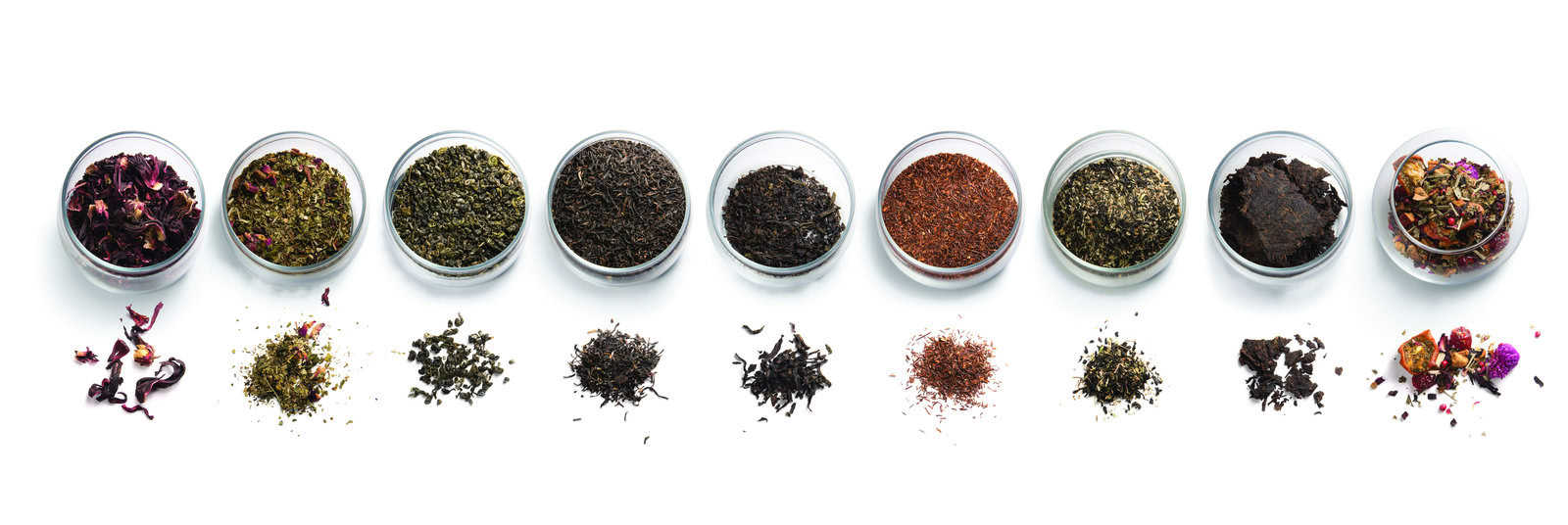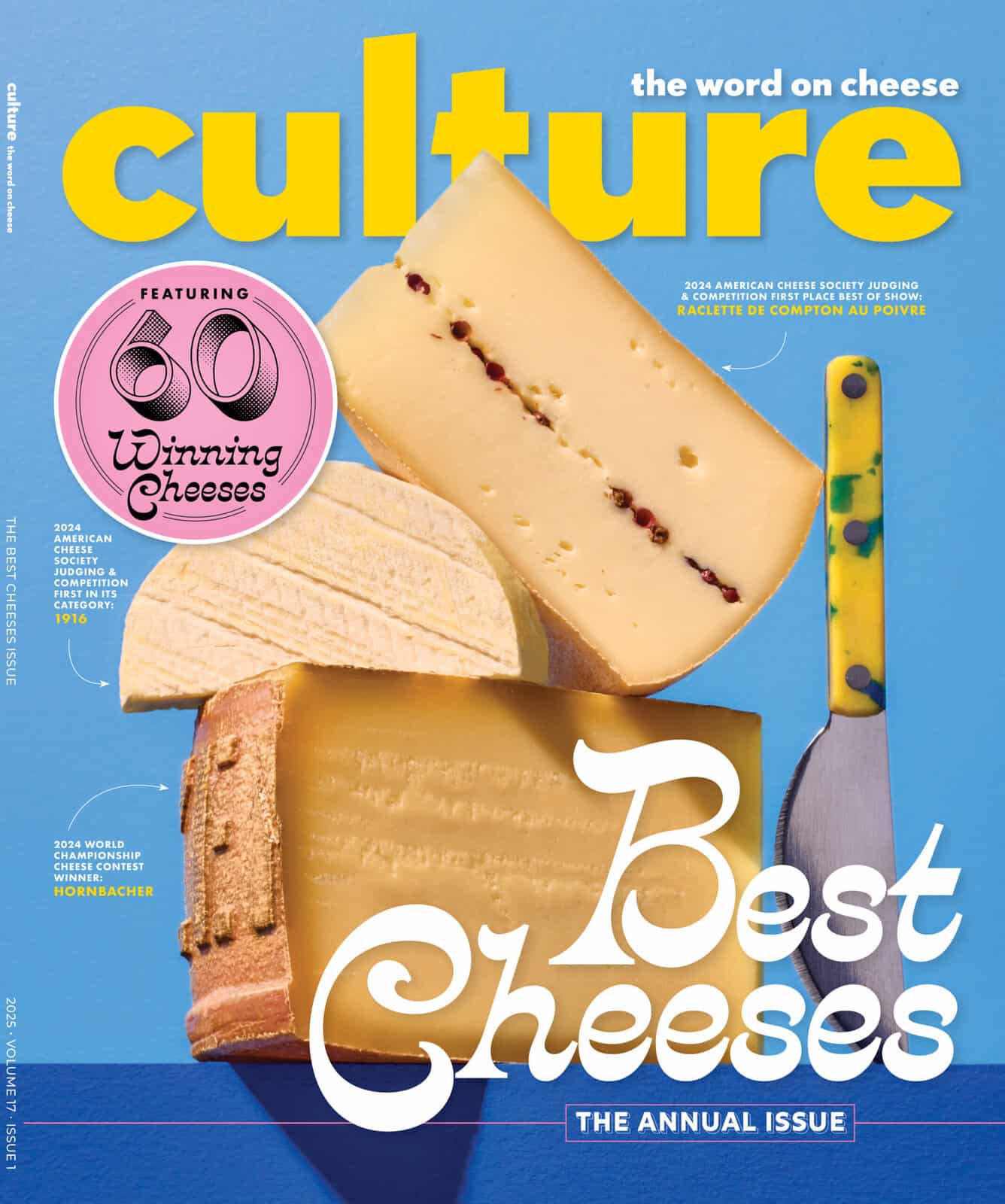If someone served you a pot of tea alongside a block of cheddar, you might raise your eyebrows. But before you write off the duo as peculiar, consider: Tea, like wine, can balance a bite of cheese through its tannins, temperature, and even terroir. (And both beverages keep our cheeks rosy while an early-spring nip still lingers in the air.)
“Most teas, especially black teas, have a lot of tannins—the same as red wines,” says Brian Wasik, owner and cheesemonger at Wasik’s Cheese Shop, operating since 1979 in Wellesley, Massachusetts. “Tannins come from leaves, seeds, buds, and tree bark. This astringency often plays a perfect foil to rich, creamy cheese—the same as acid appreciates fat when pairing beverages with cheese.”
While you could, theoretically, enjoy an iced tea with cheese, it doesn’t quite bring out the subtlety of a wedge’s flavors like hot tea does—the same goes for cheese served below room temperature.
“What I think of as tea is served hot,” says Wasik. “While it is always appropriate to serve cheese at room temp, I found tea complements cheese most when the cheese is served at a very warm room temperature. Cold cheese and hot tea does not seem to work so much.” If you are drinking hot tea, the extra warmth in your mouth helps draw out a cheese’s taste more prominently.
Additionally, if you’re sipping a single-origin variety, you can play with the terroir of tea when pairing it with cheese. For example, an India-grown Darjeeling black tea’s distinct muscatel finish tastes of honey, dried fruit, and tobacco (among other complexities), and might go well with a salty parm to offset its sweetness. Likewise, a Ceylon black tea from Sri Lanka is known to be very citrus-forward, so a tangy chèvre would likely work in harmony.
Regardless of what’s brewing in your teapot next, set the scones aside. Instead, procure a wedge from Wasik’s thoughtful list of tea and cheese pairings—curated with the help of his 17-year-old son, the third generation to work in his family’s shop. Some of these pairings might surprise, but all will delight.
Peppermint Tea + Greek Manouri
Wasik took a loose “what grows together goes together” approach for this pairing, gleaning inspiration from regional flavors.
“Mint is used in a lot of Greek cooking and pairs naturally with the freshness of Manouri cheese,” he says. “I prefer Traditional Medicinals Peppermint Delight Probiotic tea. I drink it almost every morning. Manouri, a traditional Greek cheese made from the whey of sheep’s milk feta, has many producers. It is a simple cheese and very clean and refreshing on the palate.”
Hu-Kwa Tea + Rocca Parmigiano Reggiano
“Hu-Kwa Tea from Mark T. Wendell Tea Company is perhaps my favorite,” says Wasik. “It is a Lapsang souchong, which means the black tea leaves are smoked, and it tastes and smells something like drinking a campfire.”
The monger notes his “afternoon pick-me-up” is a hardy tea that needs a hardy cheese to match. Enter: super-aged Parmigiano Reggiano.
“I like Rocca Parmigiano Reggiano aged from three to three-and-a-half years. We have carried Rocca that’s aged for over 30 years.”
Hibiscus Tea + Caseificio dell’Alta Langa La Tur
“While I love the bright, fruity notes of hibiscus tea with tart goat cheese, I really love it with the rich, creamy texture and buttery, tangy notes of La Tur,” says Wasik.
“La Tur is a mixed-milk cheese of goat’s, sheep’s, and cow’s milk. Spread it on a fruit, nut, or seed cracker, such as Olina’s Bakehouse Cranberry and Pumpkin Seeded Crisps. The match is unbeatable.”
Chai Tea + Colston Bassett Stilton
According to Wasik, this last pairing felt a little contradictory at first but proved to be a match made in cozy, creamy cheese heaven:
“This sounds counterintuitive because we usually add milk to chai, and I wouldn’t think that would work with a rich, creamy cheese,” he says. “However, the sweet, warm spice of chai tea really matches well with the salty overtones of this classic English blue.”




